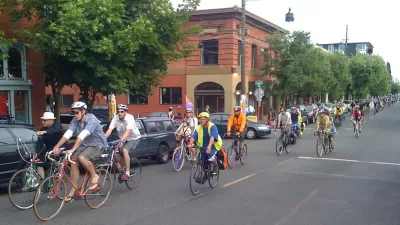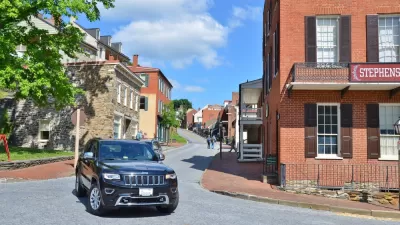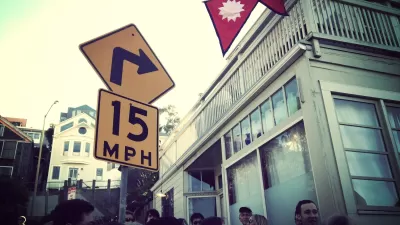The findings of a recent memo highlight the disproportionate effects of unsafe road conditions on low-income people and BIPOC communities.

Oregon's Department of Transportation has released a technical memo that outlines the effects of race and income on road safety and "draws a line between injury and fatality rates of non-drivers and the racial, income and geographic makeup of crash victims," reports Jonathan Maus for Bike Portland.
The findings in "Pedestrian Injury and Social Equity" show that "places with a higher concentration of people of color and poverty are much more likely to suffer injury or death while walking." While just nearly a quarter of Oregon's population lives in a Census tract with a high percentage of low-income and BIPOC residents, about 40% of non-driver injuries take place in these areas, which are often characterized by a "'harsh' transportation environment" and unsafe conditions. Without a comprehensive statewide database for pedestrian safety infrastructure, the study was unable to analyze how the presence or absence of such infrastructure impacts injury rates, signaling a need for more comprehensive data collection as a first step toward understanding the state's transportation equity landscape.
The findings are nothing new to bike and pedestrian advocates who study the issue, but "now that ODOT’s own data aligns with existing research, this information should be used to inform investment decisions" and prioritize needs such as a statewide infrastructure database.
FULL STORY: Oregon DOT shares first-ever internal research on how race and income impact road safety

Alabama: Trump Terminates Settlements for Black Communities Harmed By Raw Sewage
Trump deemed the landmark civil rights agreement “illegal DEI and environmental justice policy.”

Planetizen Federal Action Tracker
A weekly monitor of how Trump’s orders and actions are impacting planners and planning in America.

The 120 Year Old Tiny Home Villages That Sheltered San Francisco’s Earthquake Refugees
More than a century ago, San Francisco mobilized to house thousands of residents displaced by the 1906 earthquake. Could their strategy offer a model for the present?

In Both Crashes and Crime, Public Transportation is Far Safer than Driving
Contrary to popular assumptions, public transportation has far lower crash and crime rates than automobile travel. For safer communities, improve and encourage transit travel.

Report: Zoning Reforms Should Complement Nashville’s Ambitious Transit Plan
Without reform, restrictive zoning codes will limit the impact of the city’s planned transit expansion and could exclude some of the residents who depend on transit the most.

Judge Orders Release of Frozen IRA, IIJA Funding
The decision is a victory for environmental groups who charged that freezing funds for critical infrastructure and disaster response programs caused “real and irreparable harm” to communities.
Urban Design for Planners 1: Software Tools
This six-course series explores essential urban design concepts using open source software and equips planners with the tools they need to participate fully in the urban design process.
Planning for Universal Design
Learn the tools for implementing Universal Design in planning regulations.
Clanton & Associates, Inc.
Jessamine County Fiscal Court
Institute for Housing and Urban Development Studies (IHS)
City of Grandview
Harvard GSD Executive Education
Toledo-Lucas County Plan Commissions
Salt Lake City
NYU Wagner Graduate School of Public Service





























